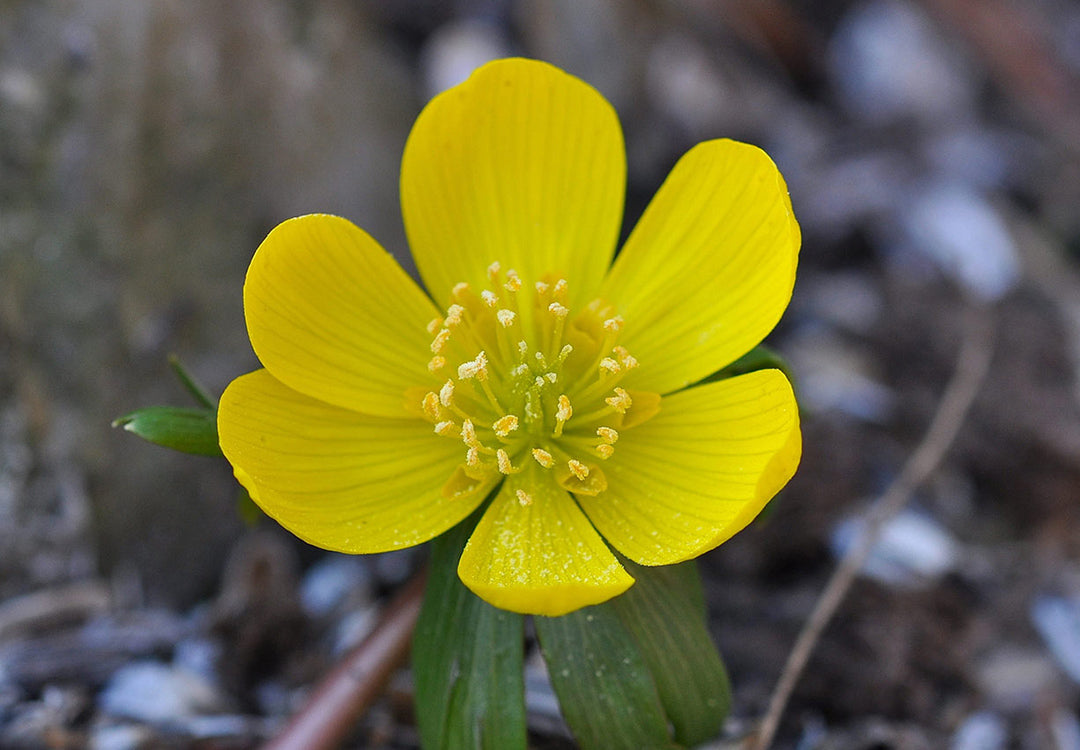
The rose family is a family of flowering dicots that are considered to be one of the most important plant families economically speaking. Under its umbrella are examples such as apples, pears, plums, cherries, almonds, strawberries, blackberries, and of course roses.
Description
Family members vary in size from tiny wildflowers to large fruit trees. They’re often woody with a few herbaceous plants thrown in for good measure.
They can be recognised by their radially symmetrical, bisexual, simple flowers which may be singular or present in an inflorescence,
It can be easy to mistake smaller members of the family with buttercups, which also have five petals and many stamina (stamens) as well as many pistils, but are not closely related to Rosaceae members.

Potentilla indica Indian or false strawberry, looking a lot like a buttercup. Image source
Flowers, Fruits & Leaves
Sepals: Usually 5 separate sepals, rarely differing.
Petals: Usually 5 separate petals, with the same number as sepals usually. Rosa cultivars almost always have many more petals, as do certain other members; perhaps you’ve noticed some spring plum flowers are many-petalled while others have only five.
Male: There are more than 5 stamens, but almost always they are too numerous to count. The stamina surround the pistils.
Female: There are usually numerous pistils, either joined at the base or separate. In some varieties that produce drupes, only one pistil may be present. The ovary can be inferior or superior, meaning the sepals can be at the bottom or at the stem of the fruit.
Fruit: Each pistil corresponds to an ovary where an individual fruit is created, which can take a range of forms from achenes to aggregate fruits, to drupes and beyond. The seeds within the fruit also vary.
Leaves: Alternate leaves may or may not be stipuled, and may or may not have a serrated border.
Noteworthy Types
There are over three hundred species of true roses (Rosa spp.), from which humans have created tens of thousands of cultivated varieties that have been bred for traits like greatly increased numbers of petals (often due to stamens fusing into petals), bright colours, and heavenly perfumes. The aggregate fruit of this genus are called rosehips and can resemble small, woody apples or pears. The thorns are actually “prickles”, which are modified stem growth. The flowers are stipuled and generally compound with serrated borders.

A red rose Rosa sp. Image source

A rose hip (Rosa sp. I think) that has been cut to show a cross section of the seeds. Image source
Amygdaloideae is a massive family that includes many of the fruits we like to consume. Apples and plums represent two different arms of this huge and important group.

Cherry blossoms Prunus sp. in spring. Image source

Pear flowers Pyrus sp. Image source
Garden strawberries are cultivars of a hybrid plant in the rose family called Fragaria × ananassa. This plant produces an example of a “false fruit”; the juicy part that we think of as being the fruit is in fact the receptacle, which is the part of the stem (pedicel) that gives rise to the true flower/fruit. The “seeds” around the outside are in fact the true fruit, each with an even smaller true seed within.

Red garden strawberry Fragaria × ananassa flowers and fruit. Image source
Blackberries and raspberries are Rubus spp whose berries are termed “composite fruits” due to the fact each of the small balls that make up the berry are each an individual fruit. Think of each of these small balls as equivalent to an apparent “seed” (true fruit) on the strawberry. When you remove the fruits from a blackberry, you can see the “receptacle” which is the equivalent to the edible juicy red part of a strawberry.

Blackberries Rubus sp. Image source
Conclusion
What a huge and varied family roses are. While at first there doesn’t seem to be a whole lot in common between the different varieties, the Rosaceae does have a distinct personality of its own that we can learn to appreciate and recognise.
If you haven’t already read my articles on plant identification and scientific names, I recommend reading those to get a broader picture of the topic. Alternatively, you can browse some of my other plant families, subfamilies and genera below.
